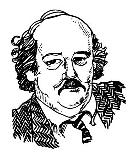Syndicated to Kansas newspapers April 24, 2017
 The best news that Kansas lawmakers got from the iconic Consensus Revenue Estimate last week is that state revenues for the upcoming two fiscal years aren’t going to drop, but instead increase just enough that the state’s fiscal problems don’t get worse.
The best news that Kansas lawmakers got from the iconic Consensus Revenue Estimate last week is that state revenues for the upcoming two fiscal years aren’t going to drop, but instead increase just enough that the state’s fiscal problems don’t get worse.
So, essentially, not getting worse is a good thing when it comes to the state budget.
The Consensus Revenue Estimate (CRE) predicts that the state is going to receive in taxes $42 million more in the upcoming fiscal year and $51 million in the following year. There is considerable money shuffling and internal borrowing, but those small-change boosts that sound like the early weeks of a new Powerball contest should be compared to a total State General Fund budget of around $6 billion dollars.
The incremental boost? Well, $42 million wouldn’t be much of a tip on a $6 billion bar tab, would it?
The best thing that the CRE brought Kansas lawmakers—who return to Topeka May 1 to finish up writing a budget and figuring out how to pay for it—is that virtually nothing has changed since they left town for a three-week vacation.
Oh, and don’t forget that while there’s predicted to be a little more cash dripping into the state treasury, lawmakers are looking at maybe $150 million a year in additional funding for K-12 education next year and likely $150 million a year increases in spending for the four following years.
Nothing got perceptibly better when you look at it from a distance, and so far, the Legislature hasn’t passed a tax bill that will add even a dime to the State General Fund.
So, we have the final numbers, or at least the latest final numbers, and what does it look like for the state of Kansas and the Legislature and you folks who elected all of them?
Remember Gov. Sam Brownback’s now largely forgotten budget offering, with its big spending cuts and no new taxes—except for you smokers and drinkers? Suddenly, that proposal which was roundly rejected by the House and Senate pencils out like a worker for the next two years except for that school finance component that is relatively small change from a $6 billion State General Fund. But, it appears that it is virtually off the table for largely political reasons, including preserving the four-year-old Kansas income tax exemption for non-wage income of LLCs.
Which brings Kansans to tax increases—netting that LLC money and increases in income tax. The flat rate proposal which purportedly had the quiet support of the governor didn’t go anywhere before Spring Break, and it reportedly hasn’t picked up much steam during the break.
So, it looks like that tax increase bill that came within three Senate votes of passage by overriding the governor’s veto has picked up a little support, and might well be the focus of the wrapup session. It actually picks up a little steam because of those puny revenue increases predicted by the CRE which can be used to offer some little breaks—maybe a percent off the sales tax on groceries.
It’s not hard to gin up a twin bill to the three-bracket measure that was vetoed so lawmakers can at least pass it under standard 63 House votes, 21 Senate votes basics, and then when it is undoubtedly vetoed again, find the three Senate votes for the override.
Ever think we’d elect a Legislature where two or three votes to support a veto by the governor essentially set the policy and the future of the state?
Maybe there ought to have been an asterisk next to their names on the ballot last November…
